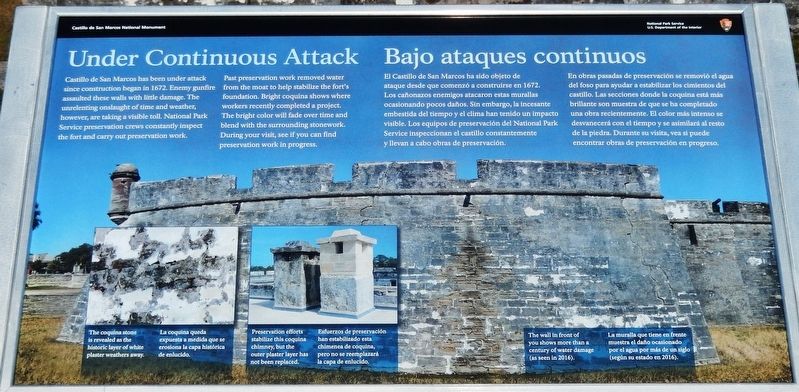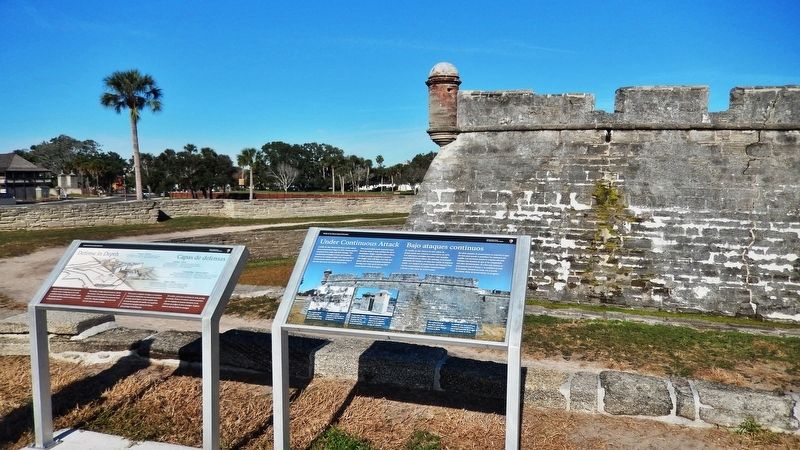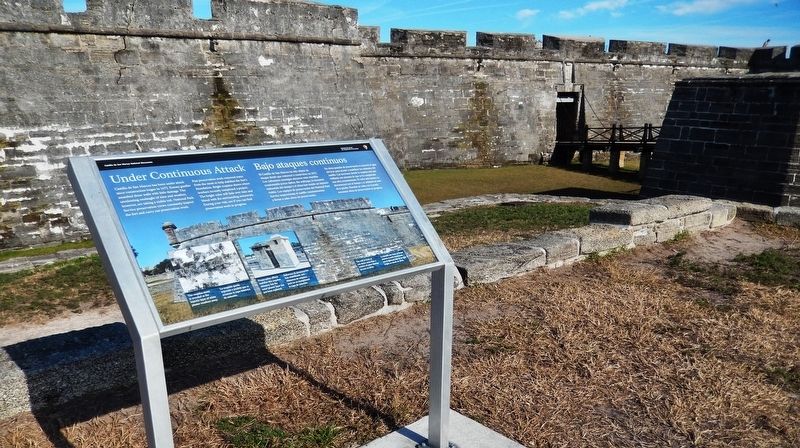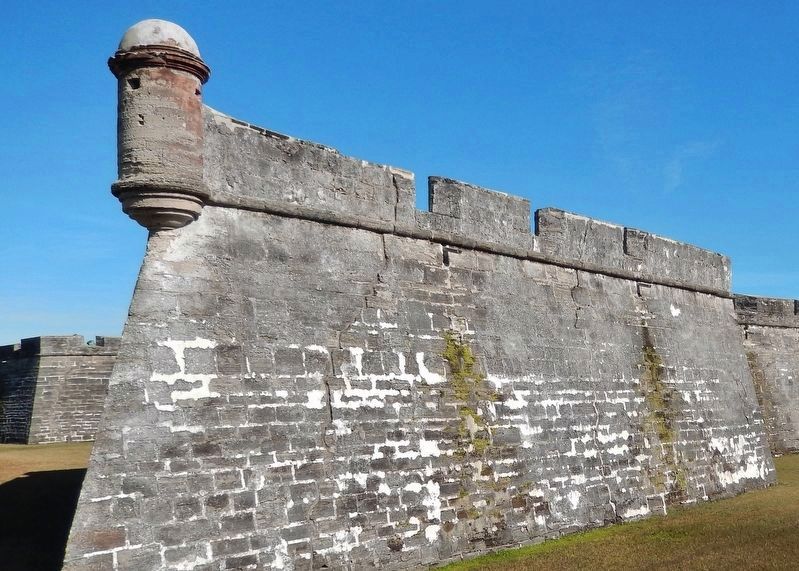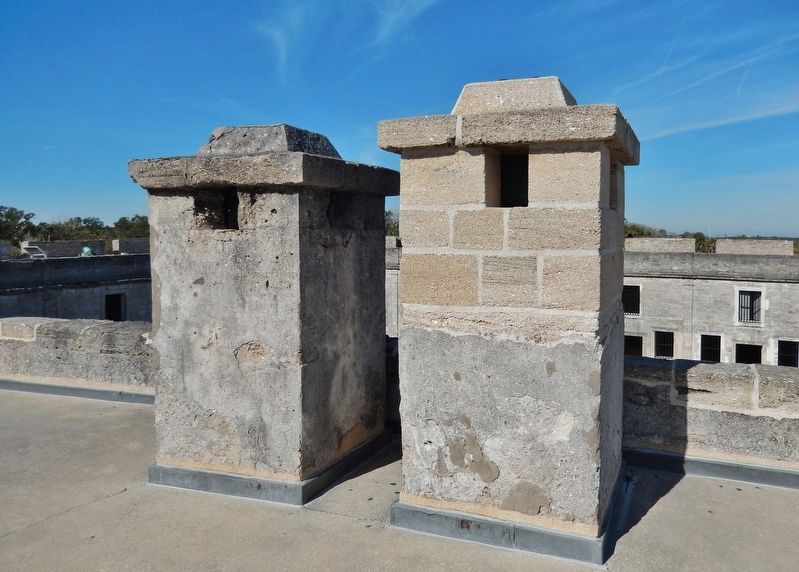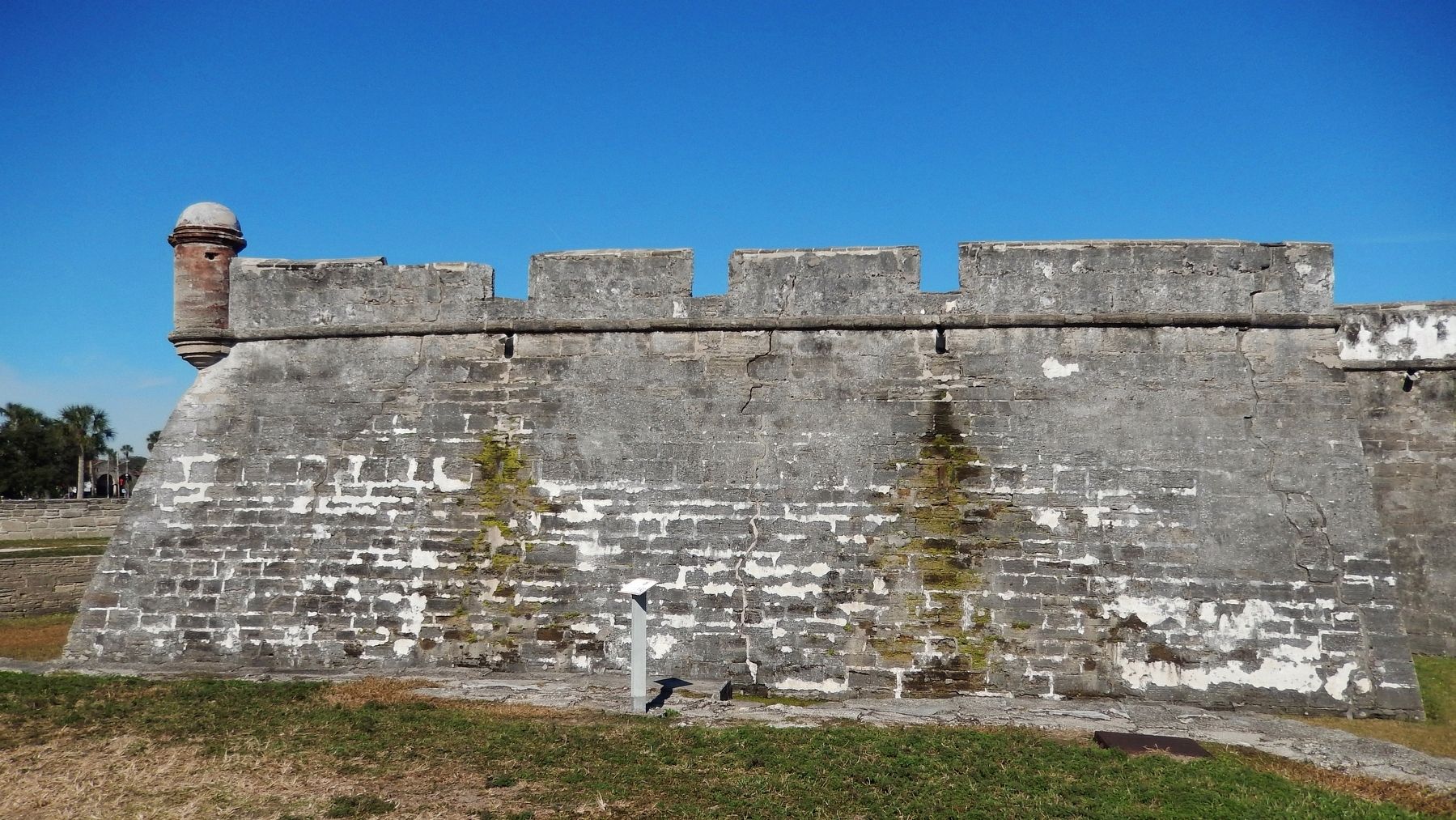St. Augustine in St. Johns County, Florida — The American South (South Atlantic)
Under Continuous Attack / Bajo ataques continuos
Castillo de San Marcos National Monument
Inscription.
Past preservation work removed water from the moat to help stabilize the fort's foundation. Bright coquina shows where workers recently completed a project. The bright color will fade over time and blend with the surrounding stonework. During your visit, see if you can find preservation work in progress.
• The coquina stone is revealed as the historic layer of white plaster weathers away.
• Preservation efforts stabilize this coquina chimney, but the outer plater layer has not been replaced.
En obras pasadas de preservación se removió el agua del foso para ayudar a estabilizar los cimientos del castillo. Las secciones donde la coquína está más brillante son muestra de que se ha completado una obra recientemente. El color más intenso se desvanecerá con el tiempo y se asimilará al resto de la piedra. Durante su visita, vea si puede encontrar obras de preservación en progreso.
• La coquina queda expuesta a medida que se erosiona la capa histórica de enlucido.
• Esfuerzos de preservación han estabilizado esta chimenea de coquina, pero no se reemplazara la capa de enlucido.
Erected 2018 by National Park Service, U.S. Department of the Interior.
Topics. This historical marker is listed in these topic lists: Colonial Era • Forts and Castles • Hispanic Americans.
Location. 29° 53.834′ N, 81° 18.709′ W. Marker is in St. Augustine, Florida, in St. Johns County. Marker can be reached from the intersection of South Castillo Drive (State Road A1A) (Business U.S. 1) and Cuna Street, on the right when traveling north. Marker is located on the Castillo de San Marcos National Monument grounds, along the sidewalk on the south side of the fort, near the main entrance, overlooking the San Pedro Bastion.
Touch for map. Marker is at or near this postal address: 1 South Castillo Drive, Saint Augustine FL 32084, United States of America. Touch for directions.
Other nearby markers. At least 8 other markers are within walking distance of this marker. Defense in Depth / Capas de defensas (here, next to this marker); Engulfed in Flames / Devorada por las llamas (within shouting distance of this marker); St. Peter's Bastion (within shouting distance of this marker); Crumbling Coquina / Piedra frágil (within shouting distance of this marker); Covered Way (within shouting distance of this marker); Well (within shouting distance of this marker); Firing Steps (within shouting distance of this marker); Ramp (within shouting distance of this marker). Touch for a list and map of all markers in St. Augustine.
More about this marker. Marker is a large rectangular composite plaque, mounted horizontally on waist-high metal posts.
Related markers. Click here for a list of markers that are related to this marker. Castillo de San Marcos National Monument
Also see . . . The Stone That Saved Spanish Florida. Given its light and porous nature, coquina would seem to be a poor choice of building material for a fort. However, coquina's porosity turned out to have an unexpected benefit. A cannon ball fired at more solid material,
such as granite or brick would shatter the wall into flying shards, but cannon balls fired at the walls of the Castillo burrowed their way into the rock and stuck there, much like a bb would if fired into Styrofoam. So the thick coquina walls absorbed or deflected projectiles rather than yielding to them, providing a surprisingly long-lived fortress. (Submitted on December 19, 2018, by Cosmos Mariner of Cape Canaveral, Florida.)
Credits. This page was last revised on August 20, 2020. It was originally submitted on December 10, 2018, by Cosmos Mariner of Cape Canaveral, Florida. This page has been viewed 138 times since then and 9 times this year. Photos: 1, 2, 3. submitted on December 12, 2018, by Cosmos Mariner of Cape Canaveral, Florida. 4, 5, 6. submitted on December 13, 2018, by Cosmos Mariner of Cape Canaveral, Florida. • Bill Pfingsten was the editor who published this page.
